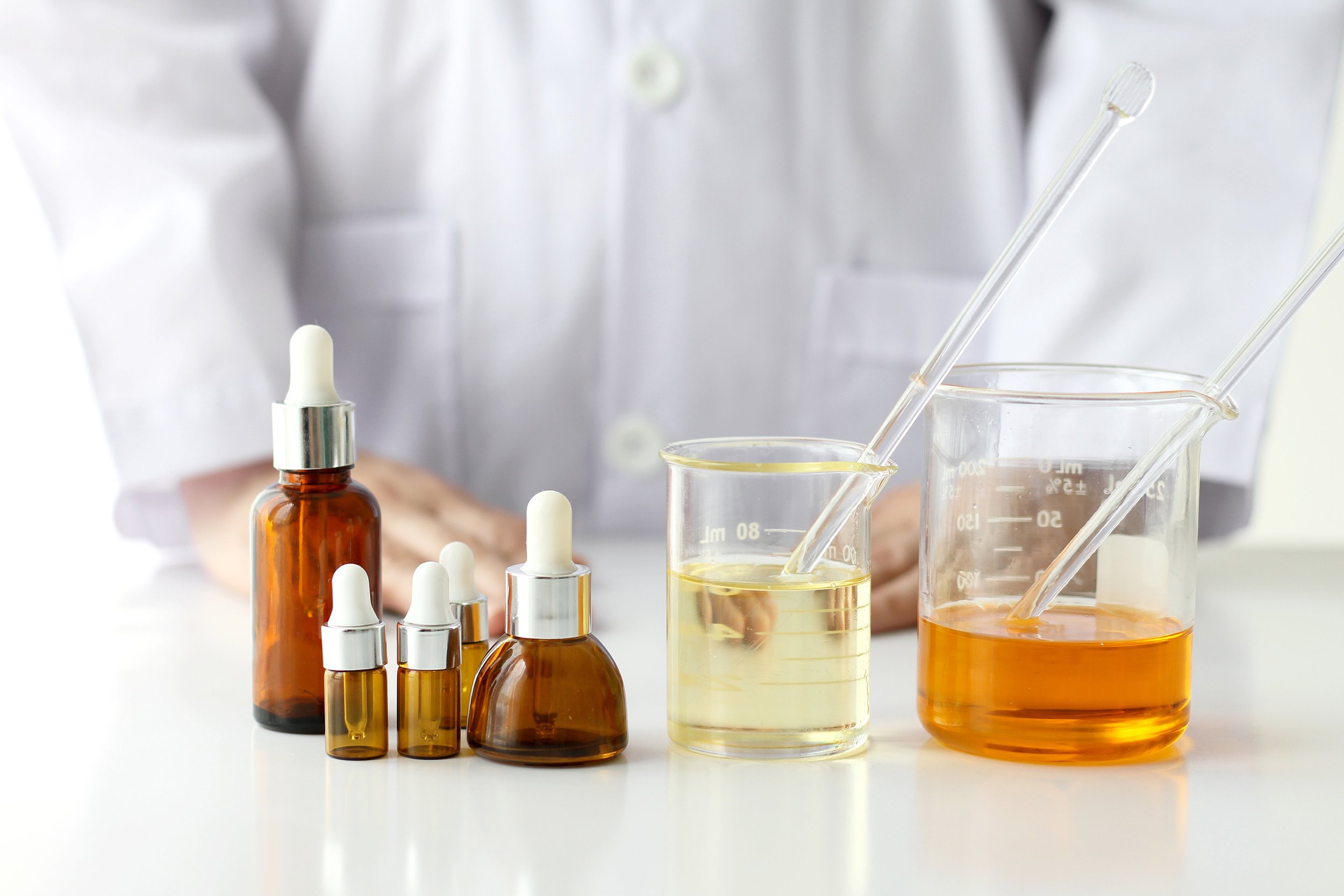apis labor will be happy to support you in submitting cosmetic products
The term cosmetic products covers a very large, different and diverse group of goods and is legally defined in Regulation (EC) No. 1223/2009.
By definition cosmetic products are "Substances or mixtures intended to come into external contact with the various parts of the human body (skin, hair system, nails, lips and external intimate areas) or with the teeth and the mucous membranes of the oral cavity, for the sole or primary purpose of cleaning, perfuming, changing their appearance, protecting them, keeping them in good condition, or affecting body odor."
Photo by Ivan Bajic/iStock / Getty Images
Product Information File and Safety Report (PART A)
The product information file contains the following data in an easily understandable language for the competent authority of the respective member state
the description of the cosmetic product
the security report
the manufacturing method in terms of good manufacturing practice
Evidence of the advertised effect
Data on animal experiments carried out
The responsible person, usually you as the manufacturer, makes the product information file, in electronic or other format, easily accessible to the competent authority at their address given on the label. We would be happy to create the PID for you. We also offer you to digitally store the product information file for your cosmetic products for the required period of time.
security report
The Safety Report (Art 10 + Appendix I) is the heart of the product information file. It must be prepared by the safety assessor in cooperation with the responsible person before the cosmetic product is placed on the market. The safety report consists of two parts:
1) The safety information covers all essential characteristics of the cosmetic product and its ingredients that may be relevant to the safety of the product:
Composition of the product including flow chart
physical/chemical properties and stability of the cosmetic product
microbiological quality
Impurities, traces and packaging material
normal and reasonably foreseeable use
Exposure to the product and the substances used
Toxicological profile of the substances
(serious) undesirable effects
2) In the safety assessment, the safety of the cosmetic product is justified on the basis of the data in the safety report - if necessary with the attachment of certain warnings.
safety assessment (Part B)
Safety assessments may only be prepared by persons who meet the following requirements (according to Cosmetics Regulation (EC) 1223/2009 Article 10, Paragraph 2):
"The safety assessment of the cosmetic product, as set out in Part B of Annex I, shall be carried out by a person holding a diploma or other evidence of formal qualification obtained after completion of a theoretical and practical university course in pharmacy, toxicology, medicine, or a similar subject or a course of study recognized as equivalent by a member state.”
The application for the accreditation of Mr. Herwig Tiefenbacher was submitted to the authority and until the final decision we work closely with safety assessors to be able to offer you a -one stop shop-.
notification process
Before it is placed on the market, the responsible person must notify the European Commission electronically of every cosmetic product (Article 13). This also applies to cosmetic products that have already been reported in accordance with the Ordinance on Control Measures for Cosmetic Products, Federal Law Gazette No. 168/1996.
All changes must also be made known to the authority.
We are happy to take over the bureaucracy of reporting and post-reporting your cosmetic products for you.
Photo by Artfully79/iStock / Getty Images
Laboratory analyzes of raw materials, finished products and stabilities
We can cover the following analyses. Of course, if you have special requests, we're more than happy to help.
Preservative stress test according to EP
Preservative stress test ISO 11930
germ count determination
Assay determinations (HPLC and GC)
chemical impurities
Identity checks of raw materials
Chemical - physical parameters


